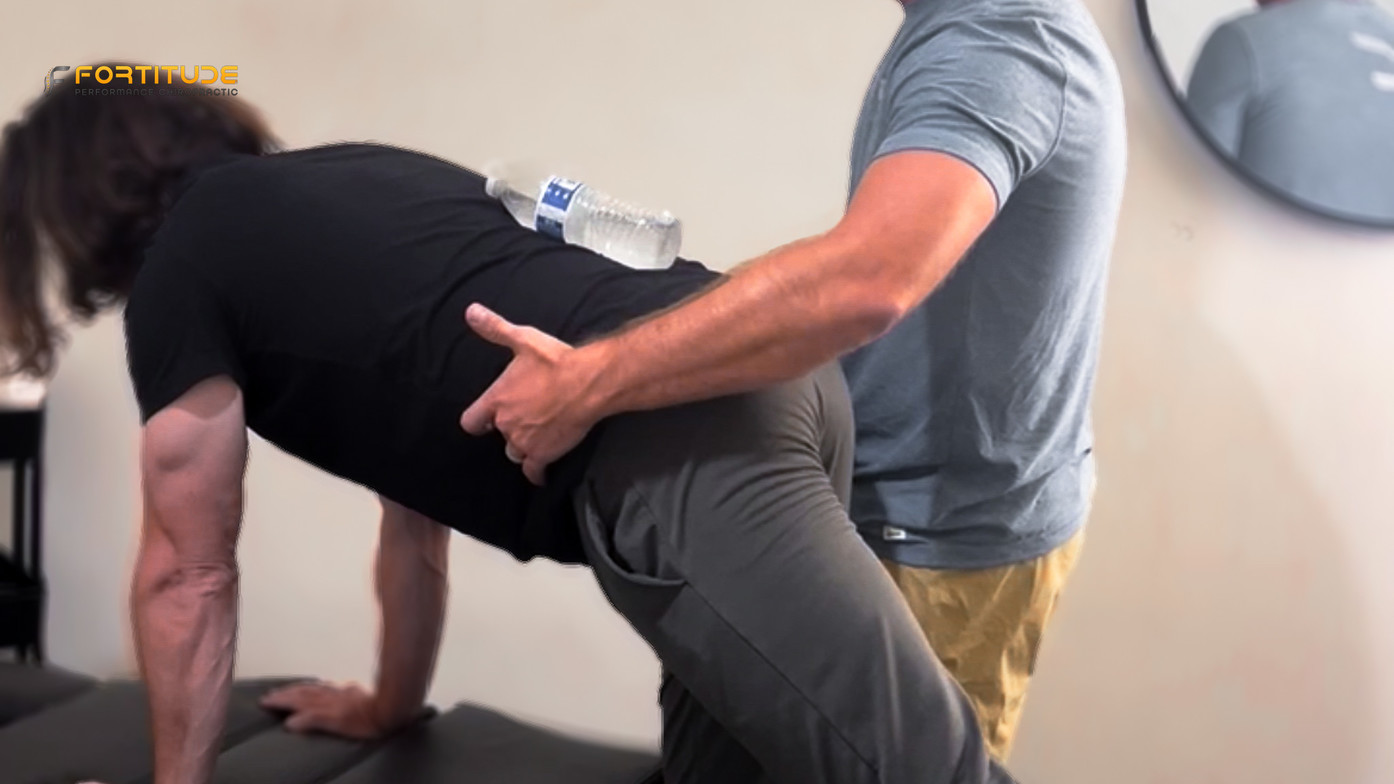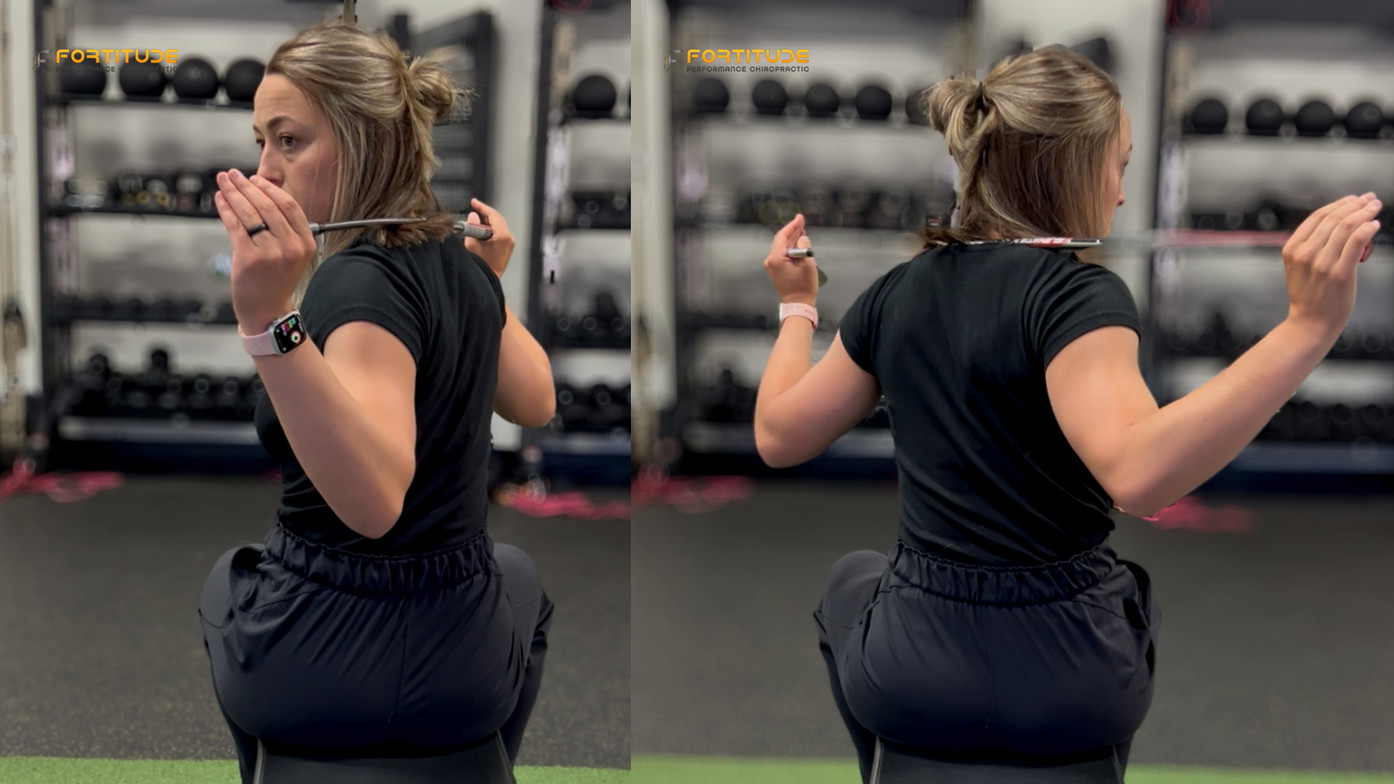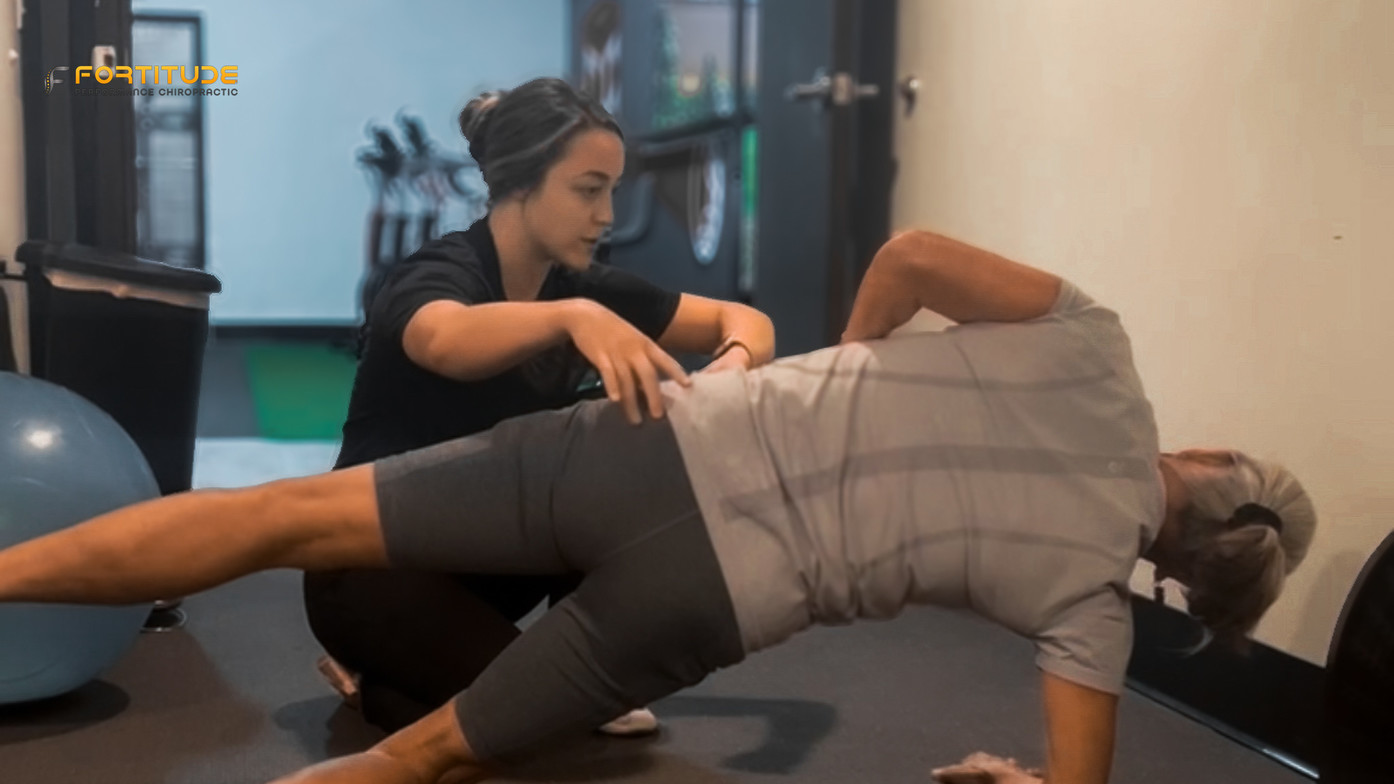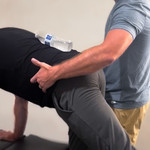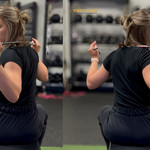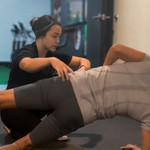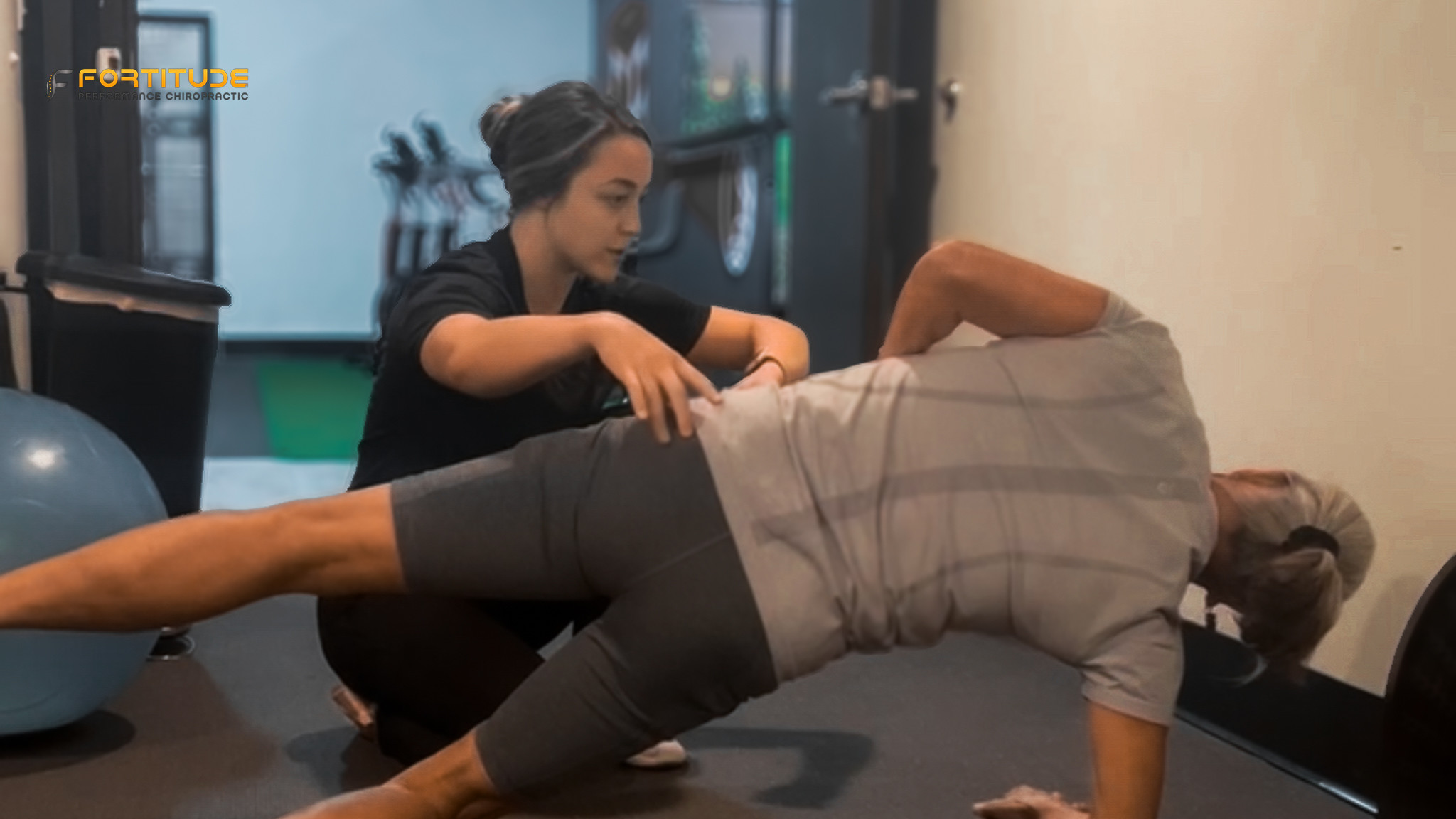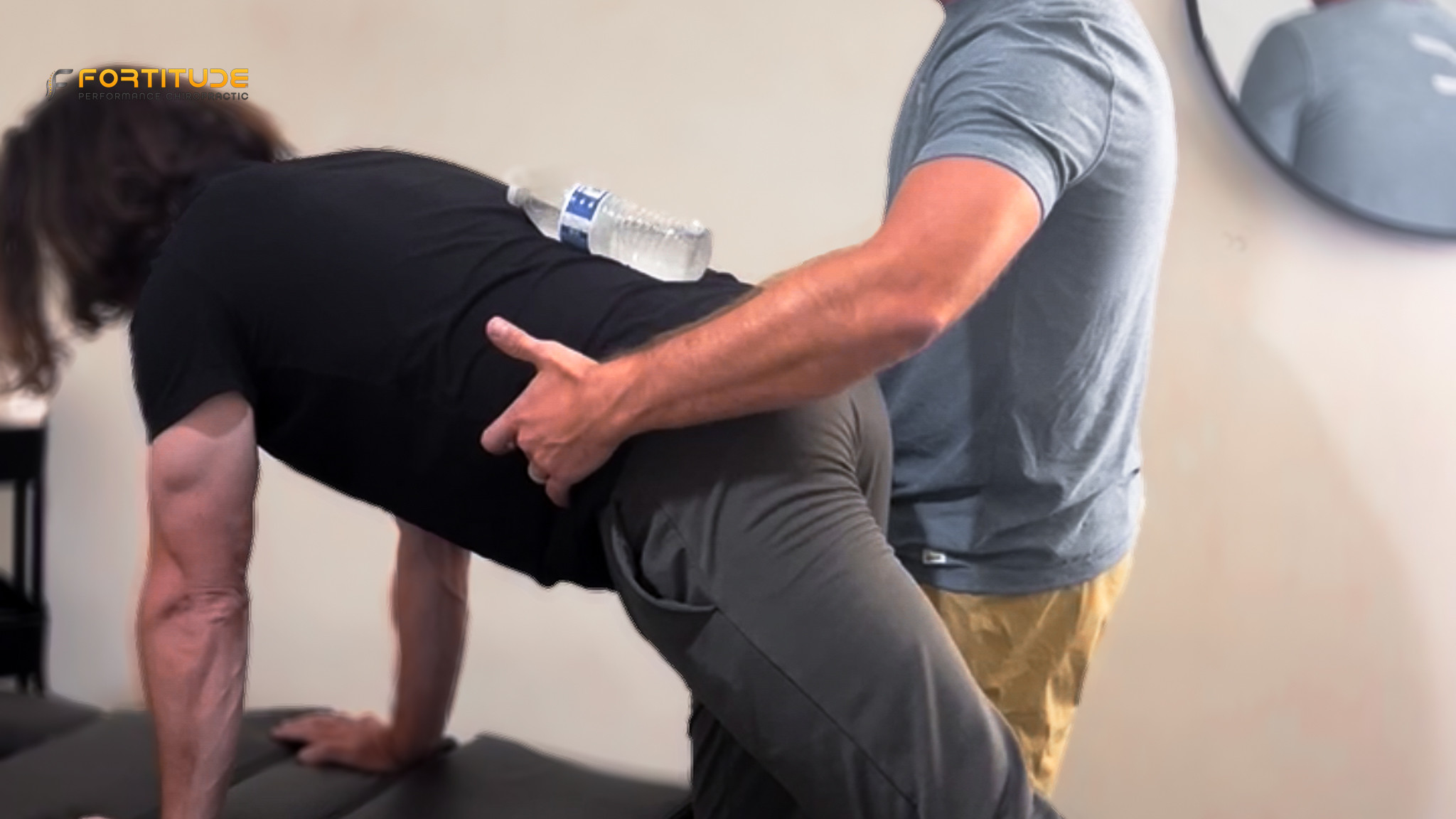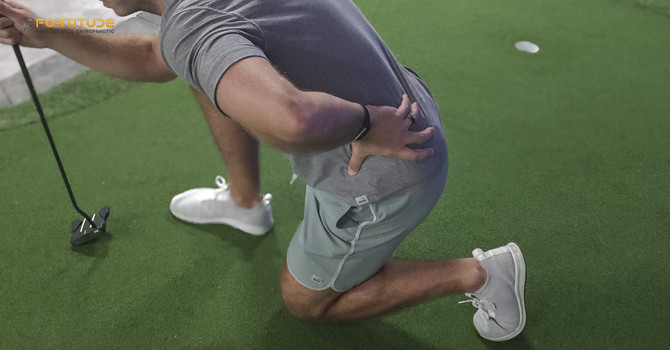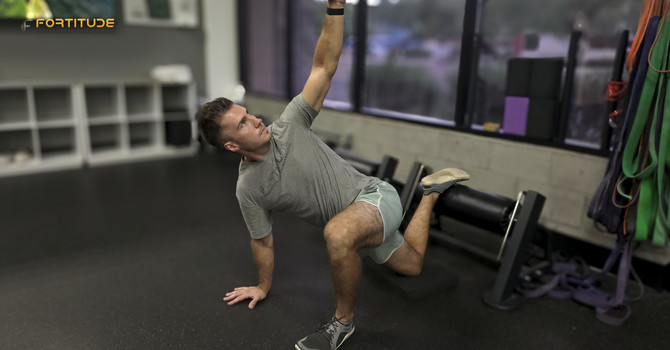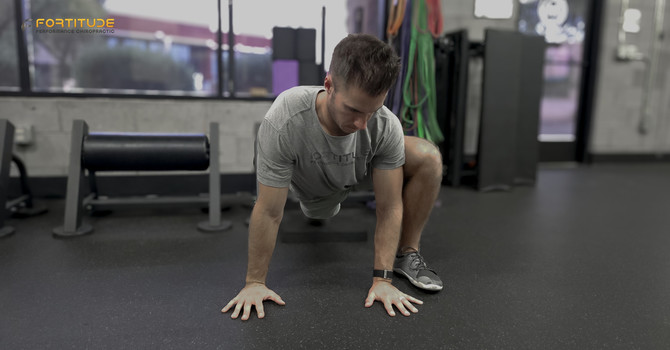Should I Play Golf With Lower Back Pain?
If you’ve ever asked yourself this after a tough round or a restless night, you’re not alone.
Golfers — especially here in Scottsdale — know how frustrating it is when lower back pain starts creeping into your swing. Maybe you feel stiff getting out of the cart. Maybe it tightens up after hole 7. Or maybe it’s already there before you even tee off.
The big question:
Is it safe to keep golfing through lower back pain?
Let’s break it down.
When Back Pain Shows Up on the Course
Lower back pain is one of the most common complaints we see in golfers. And it makes sense — the golf swing loads the spine with a lot of rotation and torque. If other parts of your body aren't moving well, your back ends up doing too much of the work.
Most golfers don’t realize how much stress they’re putting on their low back when mobility or strength isn’t where it needs to be. We often see pain show up because the hips aren’t rotating, the core isn’t supporting, or an old injury has created a subtle compensation pattern that finally catches up to them.
“We had a golfer come in recently with what he described as “tight low back pain” that always showed up by the 12th hole. But after running him through a movement screen, we found the real issue wasn’t his back at all—it was his hip mobility and poor trunk rotation. His body had found a way to make the swing happen, but his low back was absorbing all the extra stress. Once we cleaned up how his hips and core were moving, the back pain disappeared. It's a great reminder that where it hurts isn’t always where the problem starts.”
Dr. Molly
When you try to push through the pain without solving the root cause, it’s not a toughness badge — it’s a fast track to longer recovery.
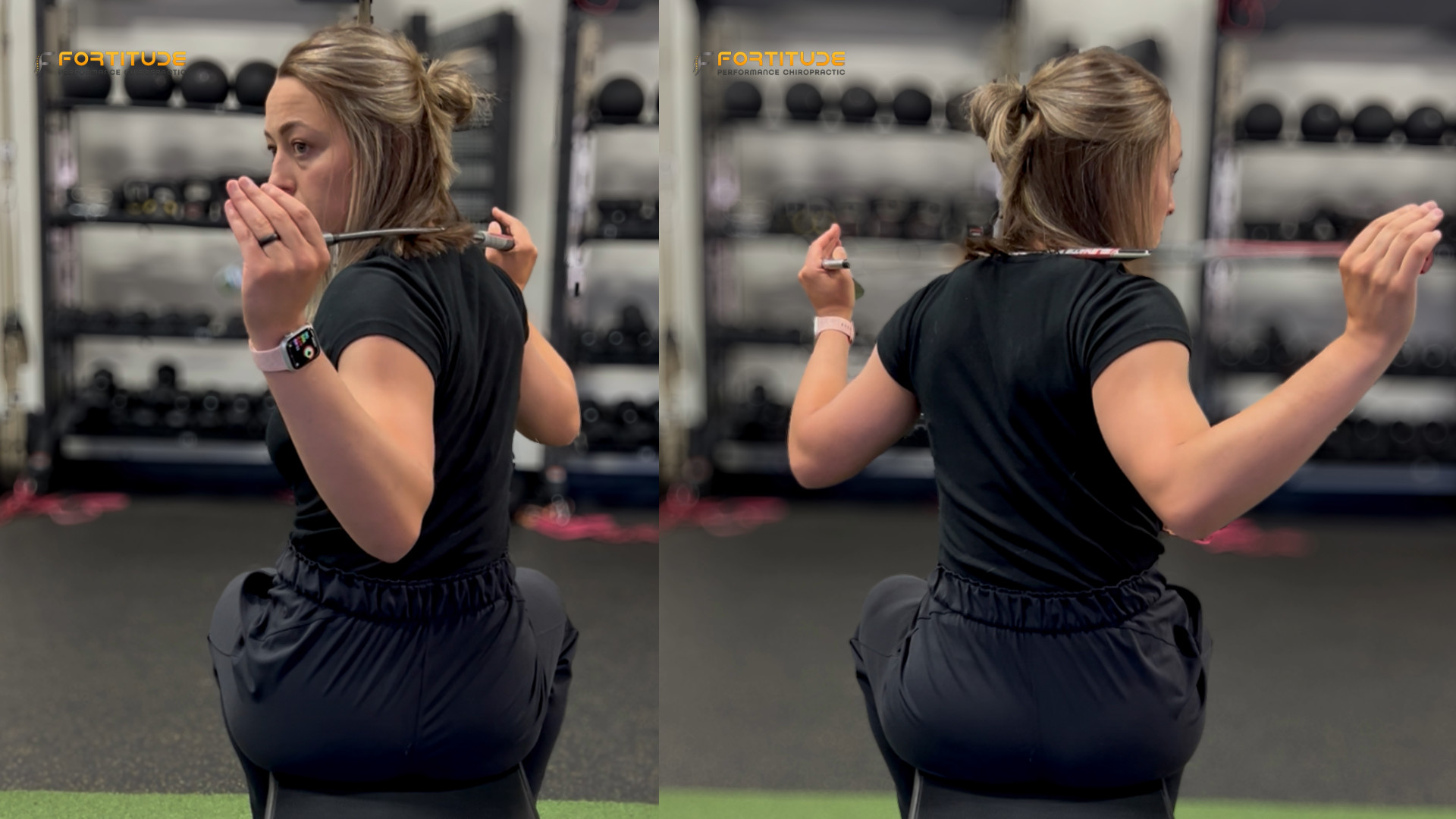
Can You Still Play?
Short answer? Maybe. But it depends on more than just the pain—**it comes down to how your body moves, what’s causing the discomfort, and whether you’re actively addressing it or just hoping it’ll pass.
In our clinic, here’s what we often see:
- Sharp, shooting pain in the lower back, especially with numbness, tingling, or pain down the leg, usually signals something more serious that needs a proper evaluation before continuing to play.
- On the other hand, dull, stiff, or tight sensations that improve with movement may indicate that the body is compensating or overworked—and we can often help patients modify how they play while they work on fixing the root cause.
Every golfer is different, and that’s why a one-size-fits-all answer doesn’t work here. If you're unsure whether it's safe to keep playing, the best next step is a professional assessment. We’ll help you figure out what’s driving the pain—and whether you need to adjust your game or your care plan to stay on the course safely.
What If Your Back Isn’t the Problem?
This is the part most people get wrong.
They stretch their back. Ice it. Foam roll it. Maybe even pop some ibuprofen after a round. And sure, those things might bring temporary relief — but they’re not solving the real issue.
Because in many cases, your lower back pain isn’t really a back issue.
We often find it’s actually a mobility issue in the hips or upper back, or a weakness in the core that’s forcing your spine to do more than it should. And if your swing mechanics are compensating for those weak links? That’s when things flare up.
“One of the most common surprises we see during golf assessments is how often the hips aren’t loading properly during the backswing or transition. The golfer will swear it’s their back causing the problem, but once we assess their movement, we find that limited hip rotation or poor control is forcing the lower back to pick up the slack. When we cue the right movement or free up the hip joint, they’re shocked—suddenly the swing feels smoother, the back pain eases, and their power actually improves. It’s a perfect example of how fixing the real problem often starts somewhere other than where it hurts.”
Dr. Maxim
How We Actually Fix It
At Fortitude, we don’t just crack your back and send you out the door.
We look at how your whole body moves—not just your spine. Golf puts a lot of stress on your back, especially if other parts of your body aren’t doing their job. Our goal is to find out why your back is hurting and help you fix it for good.
Here’s what we look at:
- How well your hips rotate
- How you hinge during setup and throughout your swing
- How your core supports your body during motion
- If your shoulders and upper back are moving the way they should
- Any old injuries that might be changing how you move
We test:
- Strength and balance
- Flexibility and joint motion
- How your body moves through golf-specific positions like backswing and follow-through
Then, we build a custom plan just for your body and your swing. No one-size-fits-all programs here.
“In most golf evals, we use tools like resisted rotation drills or step-off assessments to see how your core and hips really work under pressure. One simple cue that surprises a lot of golfers? Teaching them how to load their trail hip properly—once they get it, they feel more power and their back stops doing all the work.”Dr. Maxim
The result?
You don’t just feel better—you move better, swing better, and actually play pain-free again.
Don’t Wait for a “Blow-Up Round”
Are You a Golfer Who’s Battled Low Back Pain?
You’re not alone—and it’s not just you getting older or swinging too hard.
Low back pain is one of the most common things we see in golfers, especially when your body starts to move in ways it wasn’t meant to.
If you’ve ever felt pain in your back during or after a round…
If your swing doesn’t feel the same and you’ve tried stretching or rest with no real relief…
Or if you’re starting to wonder how long your body can keep up with your game—
That’s your body telling you something needs to change.
Here’s the truth:
Your back pain might not actually be a back problem.
It could be your hips not rotating, your core not firing, or your upper back staying locked up—and your spine is picking up all the slack.
We’ve helped hundreds of golfers in this exact spot. And once they stop chasing the pain and start fixing what’s really going on underneath, everything changes:
- Their swing feels smoother
- Their back pain disappears
- And most importantly, they feel like they can keep playing for years—without fear or hesitation
Free Resource for Golfers in Pain
Are you a golfer with nagging low back pain?
We made a free guide that’s helped hundreds of Scottsdale golfers keep playing, even when their back was acting up.
It’s packed with simple drills, mobility tips, and rehab strategies you can start using right away.
Click here to download the Golf Pain Guide
FAQ: Golf + Back Pain
Can golf cause lower back pain?
Yes — especially if your hips and upper back aren’t moving well. The golf swing puts high rotational stress on the spine, and if your body isn’t ready for it, your low back ends up taking the hit.
Is golf bad for lower back pain?
No—but only if you’re moving well.
Golf isn’t the problem. In fact, with the right mobility, strength, and support, it can still be a safe and enjoyable part of your routine—even if you’ve had back pain.
But if your swing is compensating, your core isn’t doing its job, or your hips are stiff, your back ends up taking the hit. That’s when pain starts to show up round after round.
Can I golf with lower back pain?
It depends on what’s causing the pain—and how your body is moving. Some golfers feel better once they’re warmed up, while others notice their pain gets worse during or after a round. If the pain is sharp, shooting, or radiates down the leg, it’s usually a sign something deeper is going on.
That’s why we always recommend getting checked first.
Does my golf swing need to change?
Not always—but your body might. We’re not swing coaches, but what we are experts in is how the body moves during the swing. Many golfers with pain are unknowingly compensating—using their lower back instead of loading through the hips and core.
When we improve mobility, strength, and control, the swing often changes on its own. Most golfers notice more space in their backswing, better rotation, and the ability to open up to the target without restriction. Many of our patients even report gaining 30+ yards after working with us—not because we changed their swing, but because we changed how their body moves.
What’s the best exercise for golfers with back pain?
There’s no one-size-fits-all answer—and that’s the point. The best exercise is the one that’s right for your body, yourswing, and your goals.
While many golfers benefit from things like hip mobility, core control, and thoracic rotation work, those are just starting points. What actually makes the difference is identifying what’s holding you back—and building a plan that addresses it directly.
At Fortitude, that’s exactly what we do: custom movement assessments, tailored rehab, and care that’s designed around your game—not someone else’s.
You Might Also Like:
If you found this helpful, check out a few more of our most popular blogs for golfers:
-
How to Fix Golfer’s Elbow
Why that nagging inner elbow pain isn’t just from your swing — and what you can do to fix it for good. -
Wrist Pain from Golf? Here’s What It Really Means
The hidden mechanics behind golf-related wrist pain and how to keep it from messing with your tempo. -
What Does Dry Needling Actually Do?
How this powerful tool works beneath the surface to reduce pain, release tension, and speed up recovery. -
How Chiropractic Offers Relief for Sports Injuries
From mobility to muscle activation — what makes sports-focused chiropractic care different (and more effective).

Fortitude Performance Chiropractic
Contact Me
